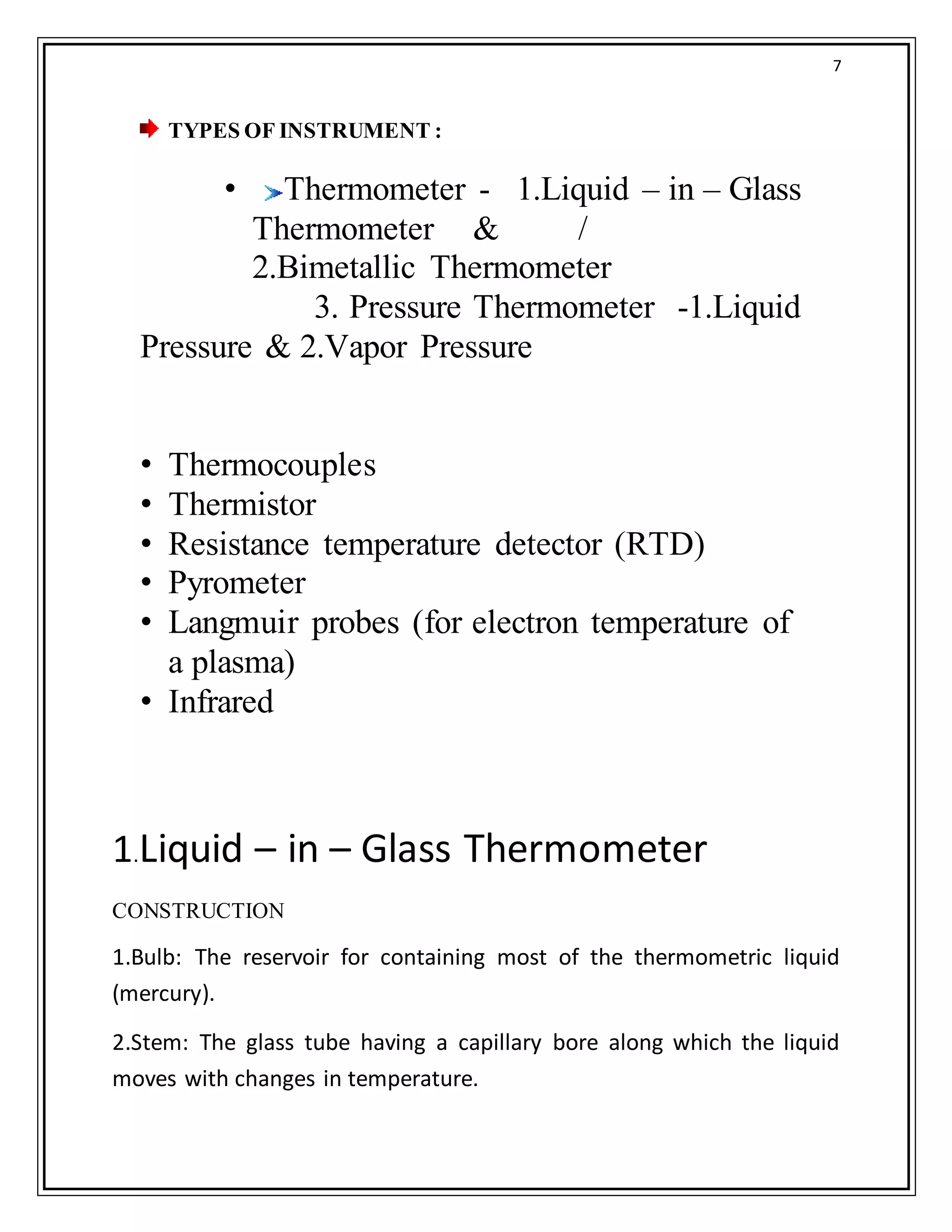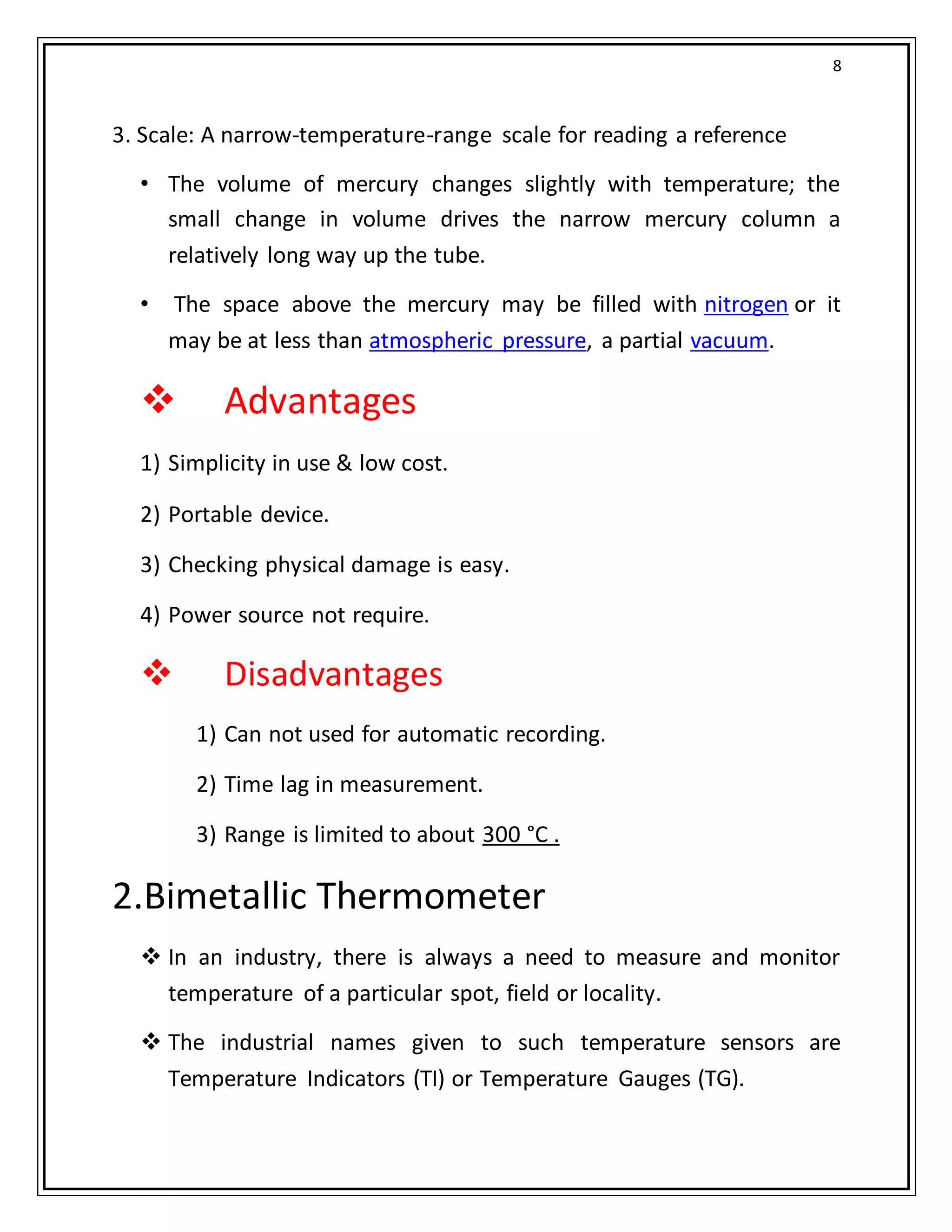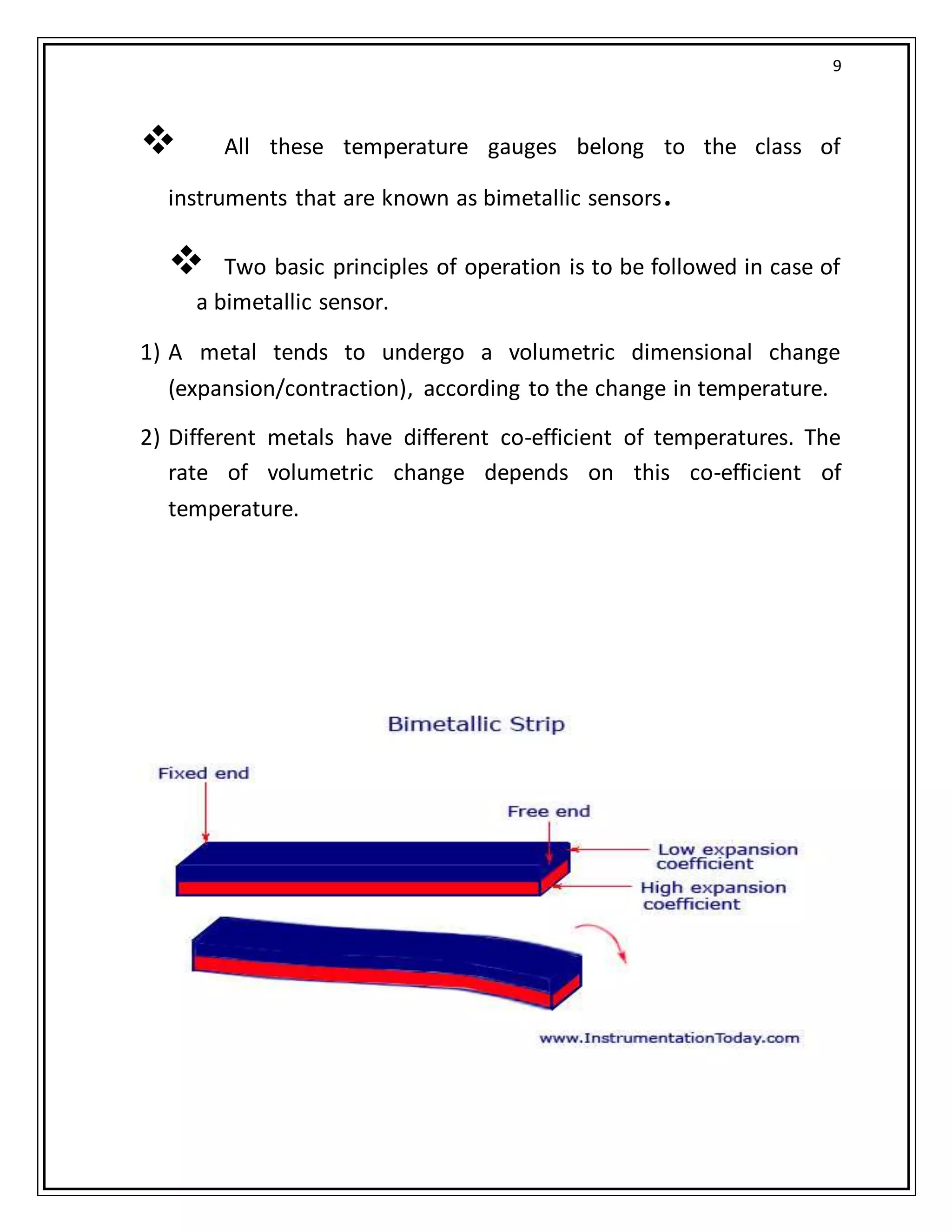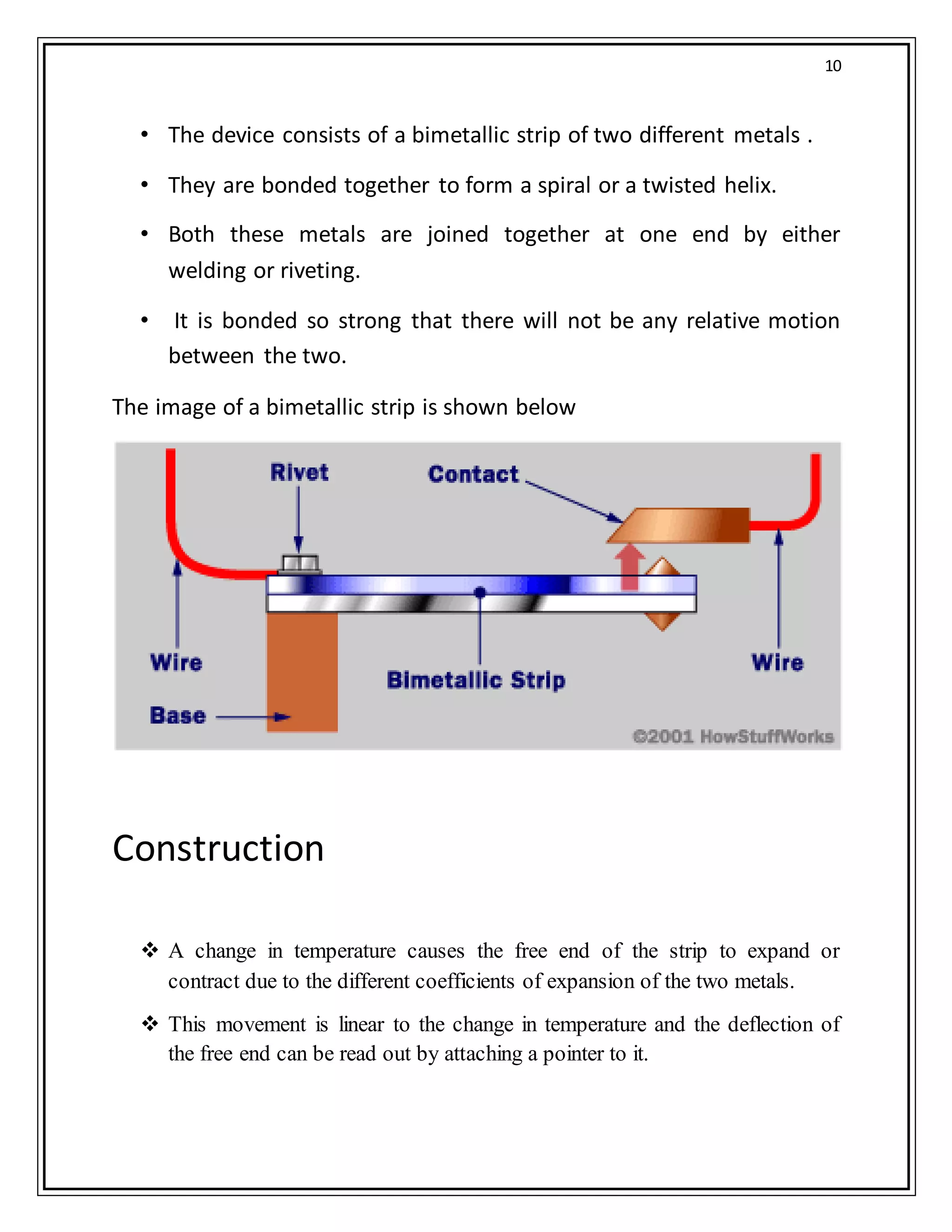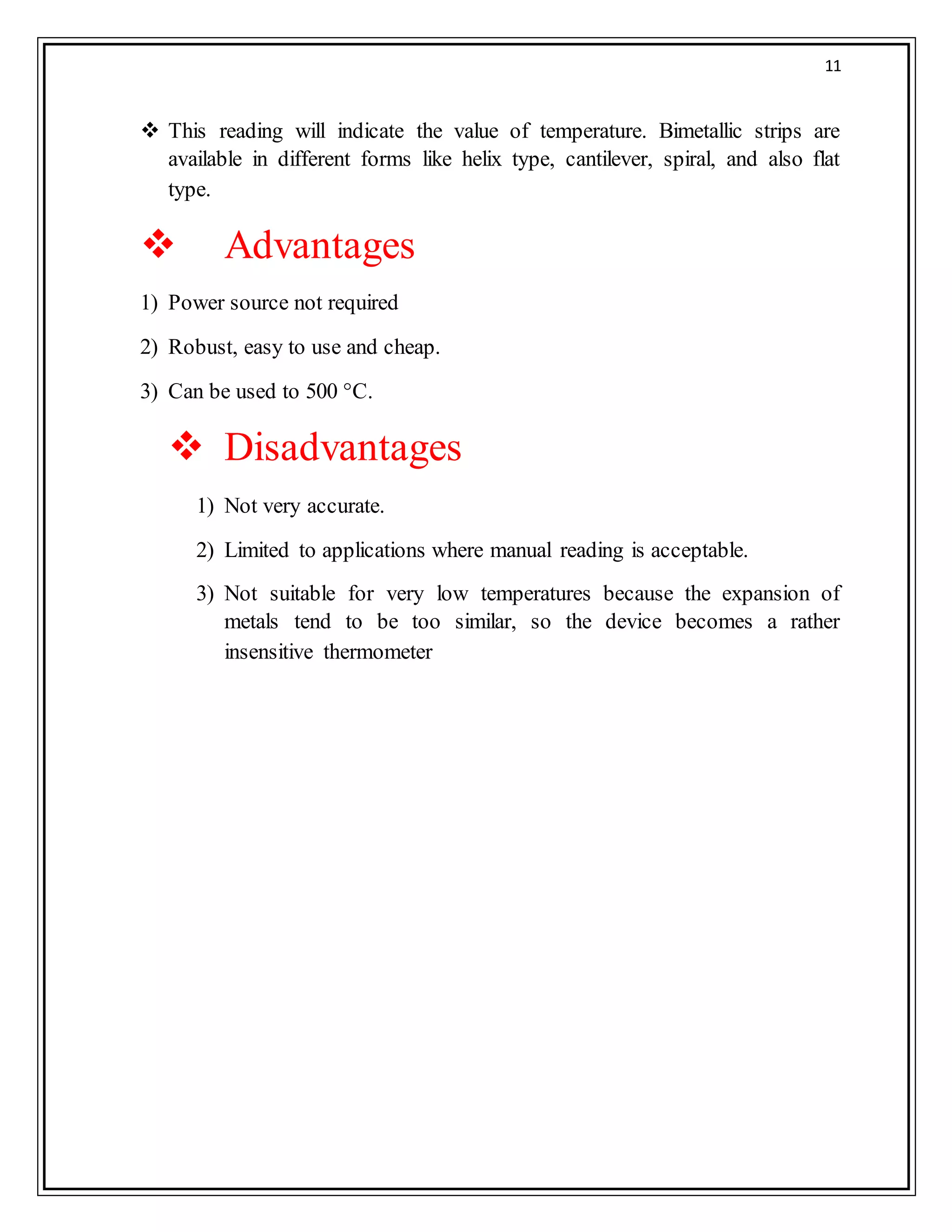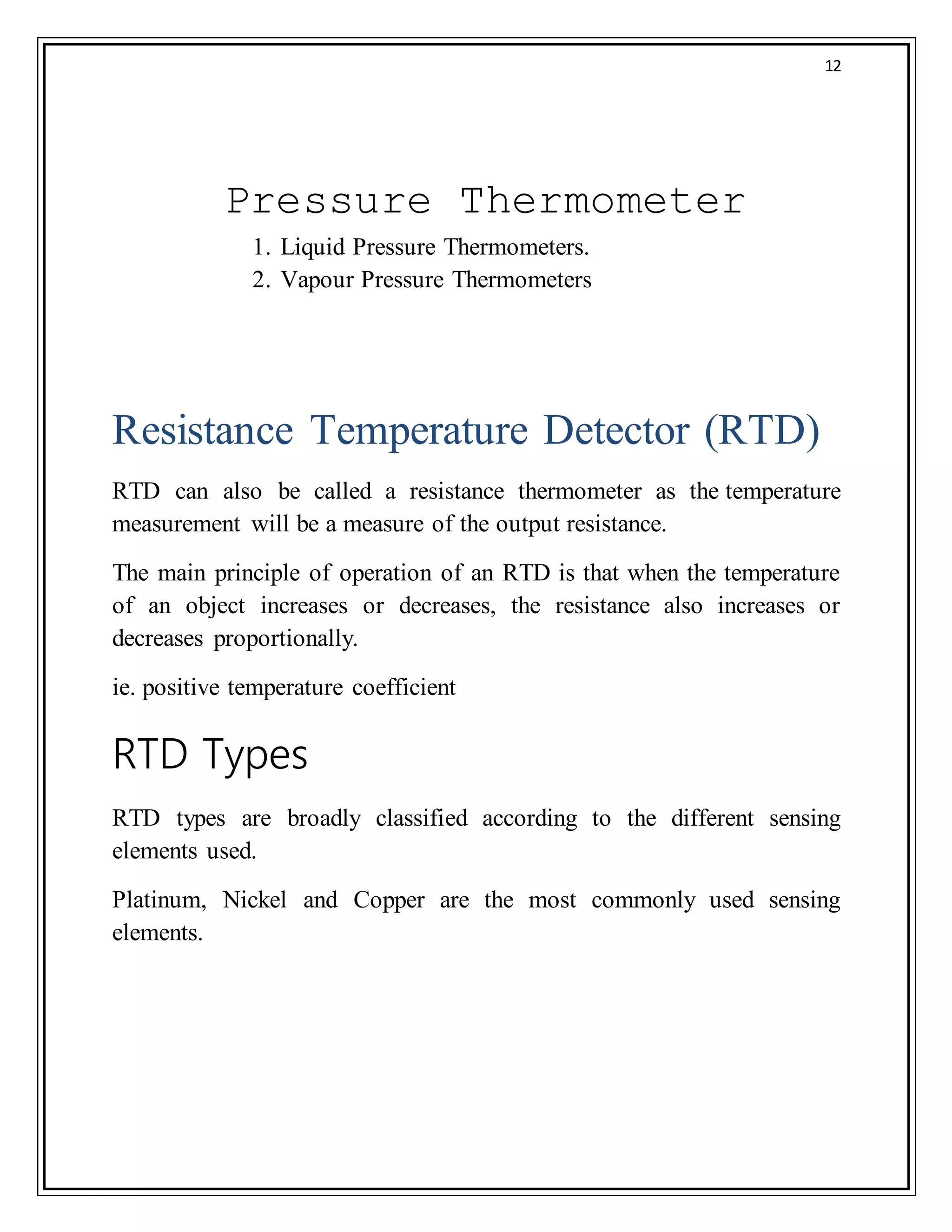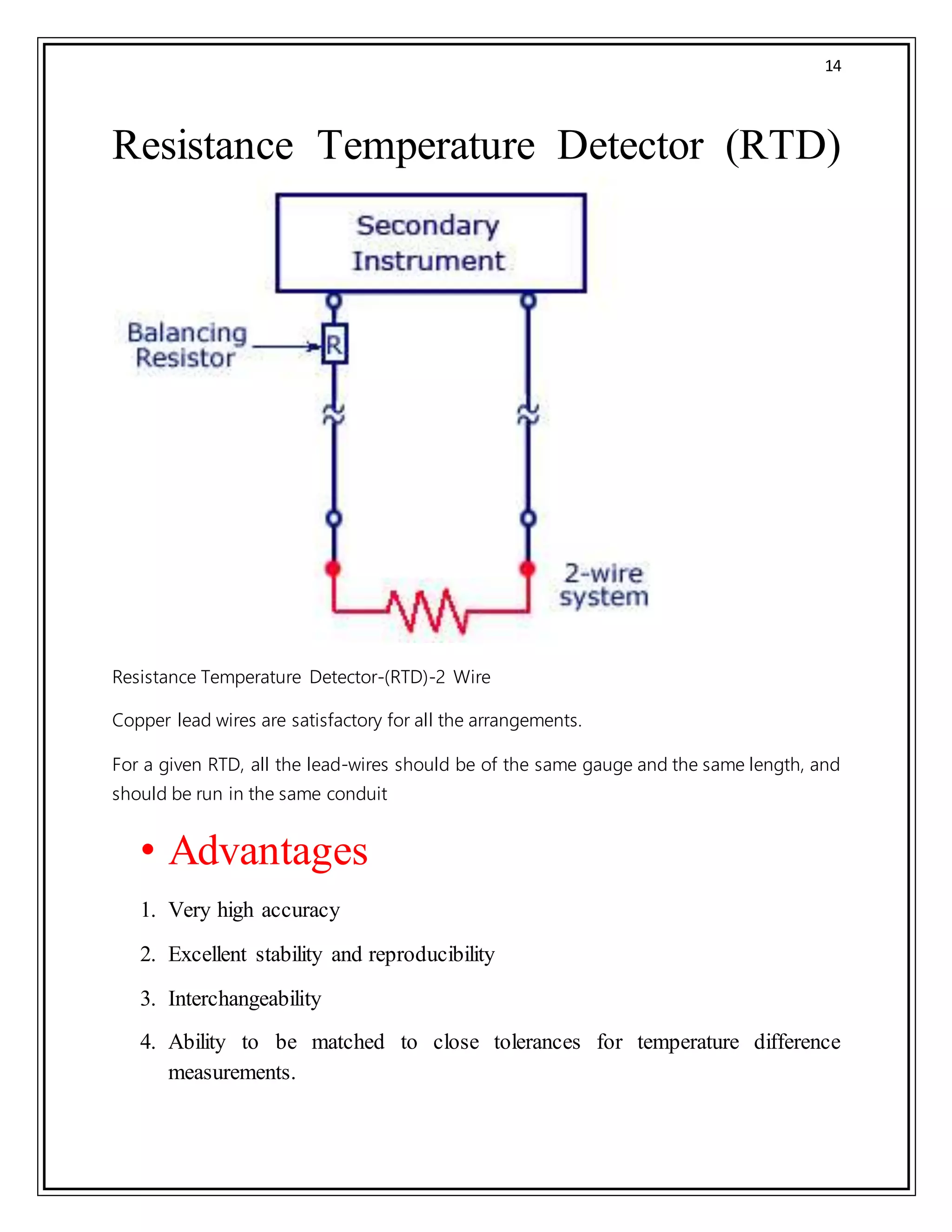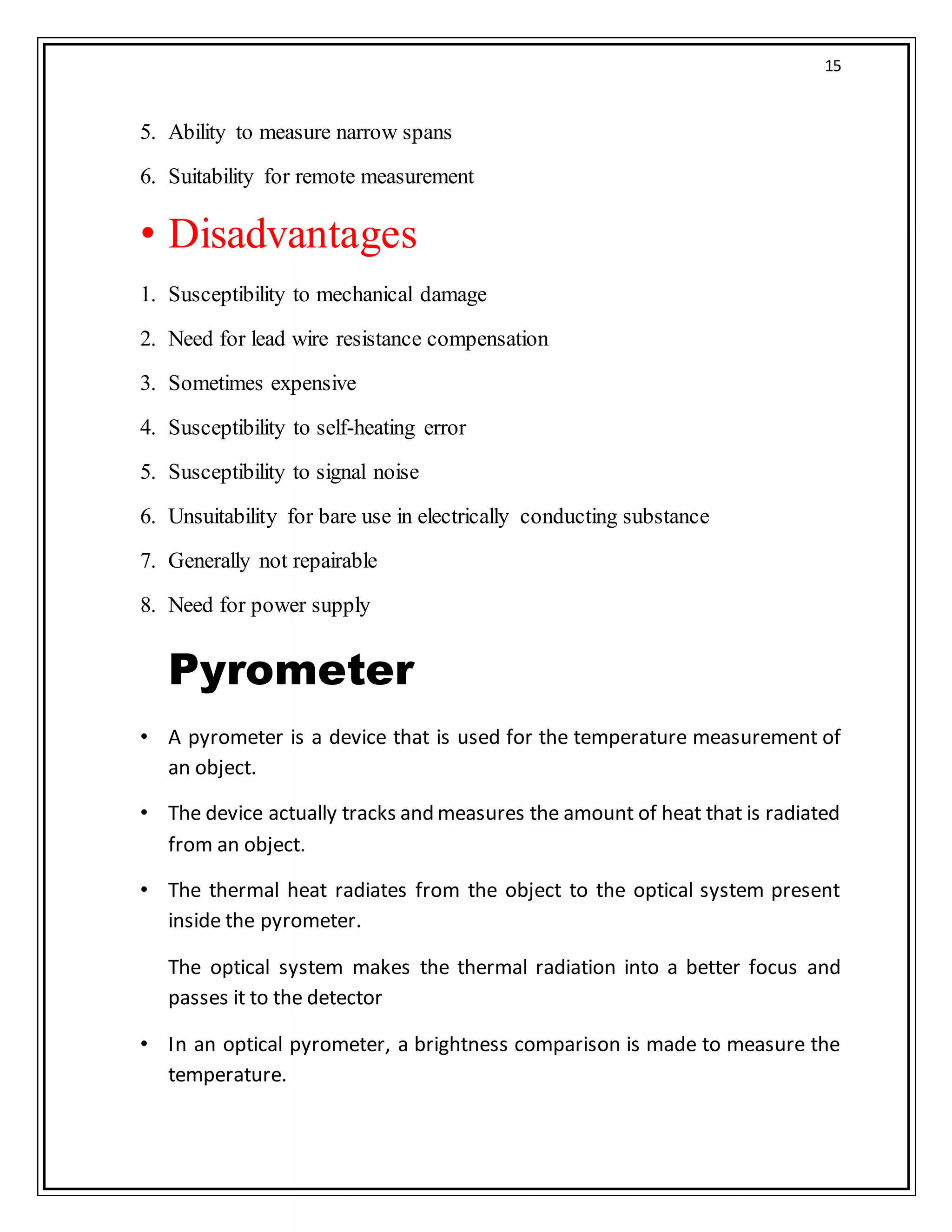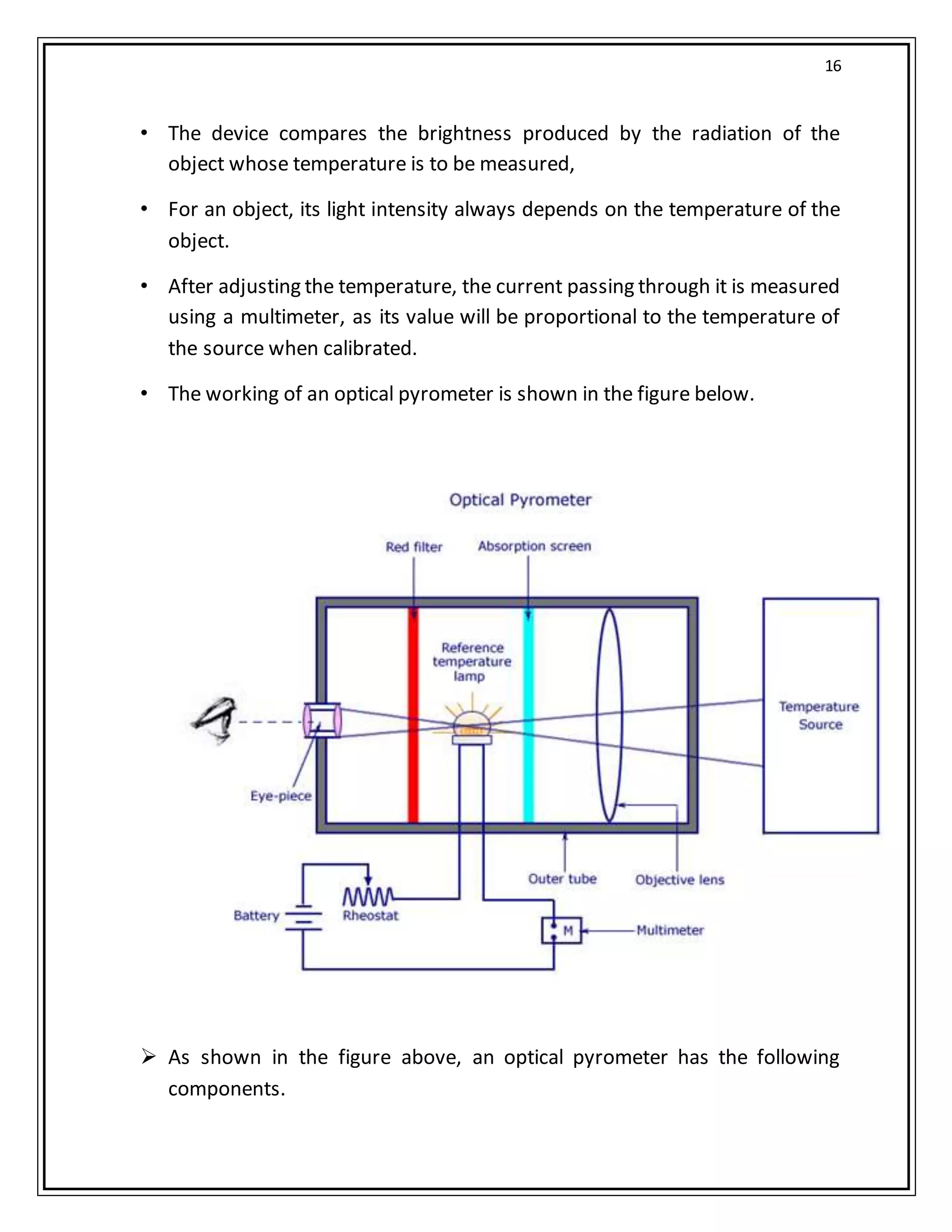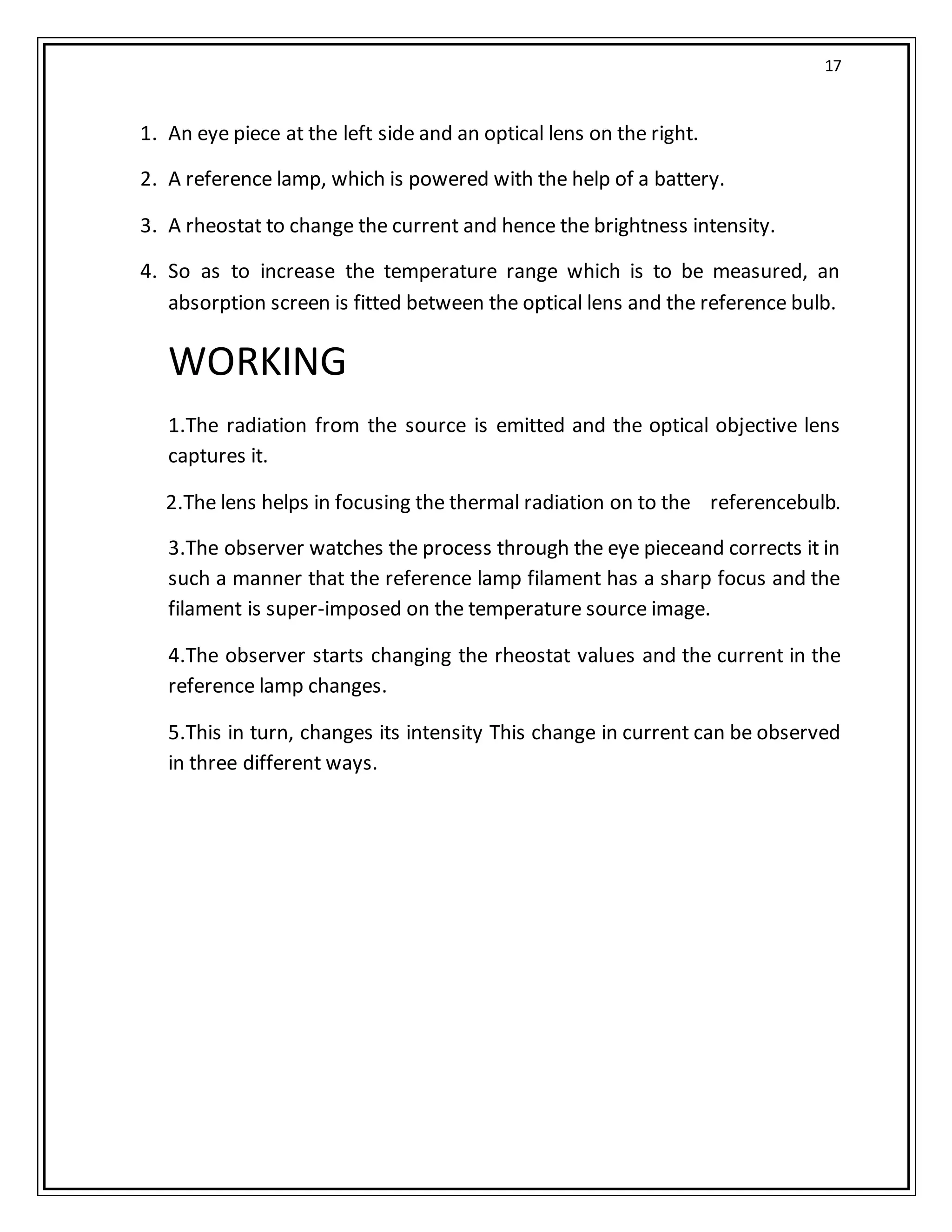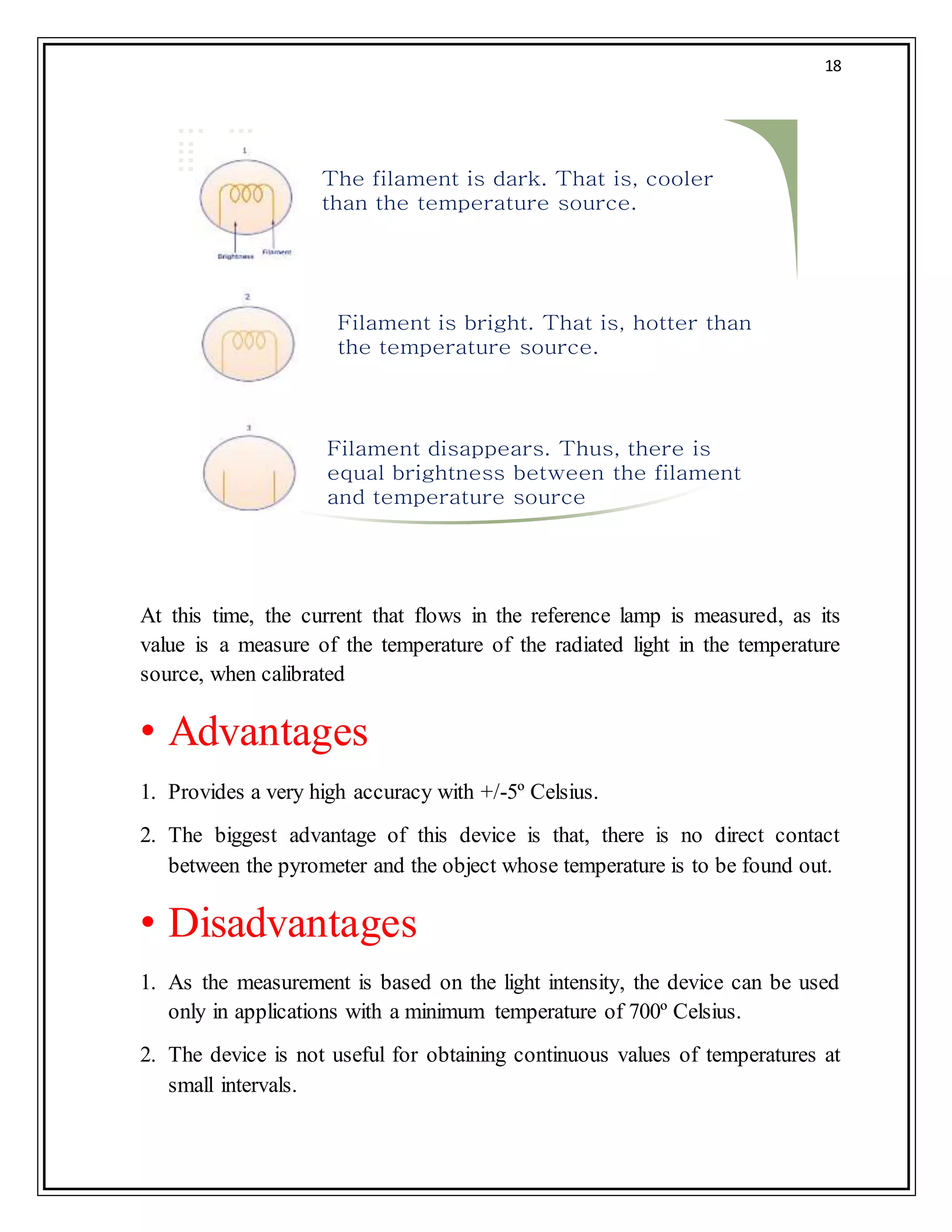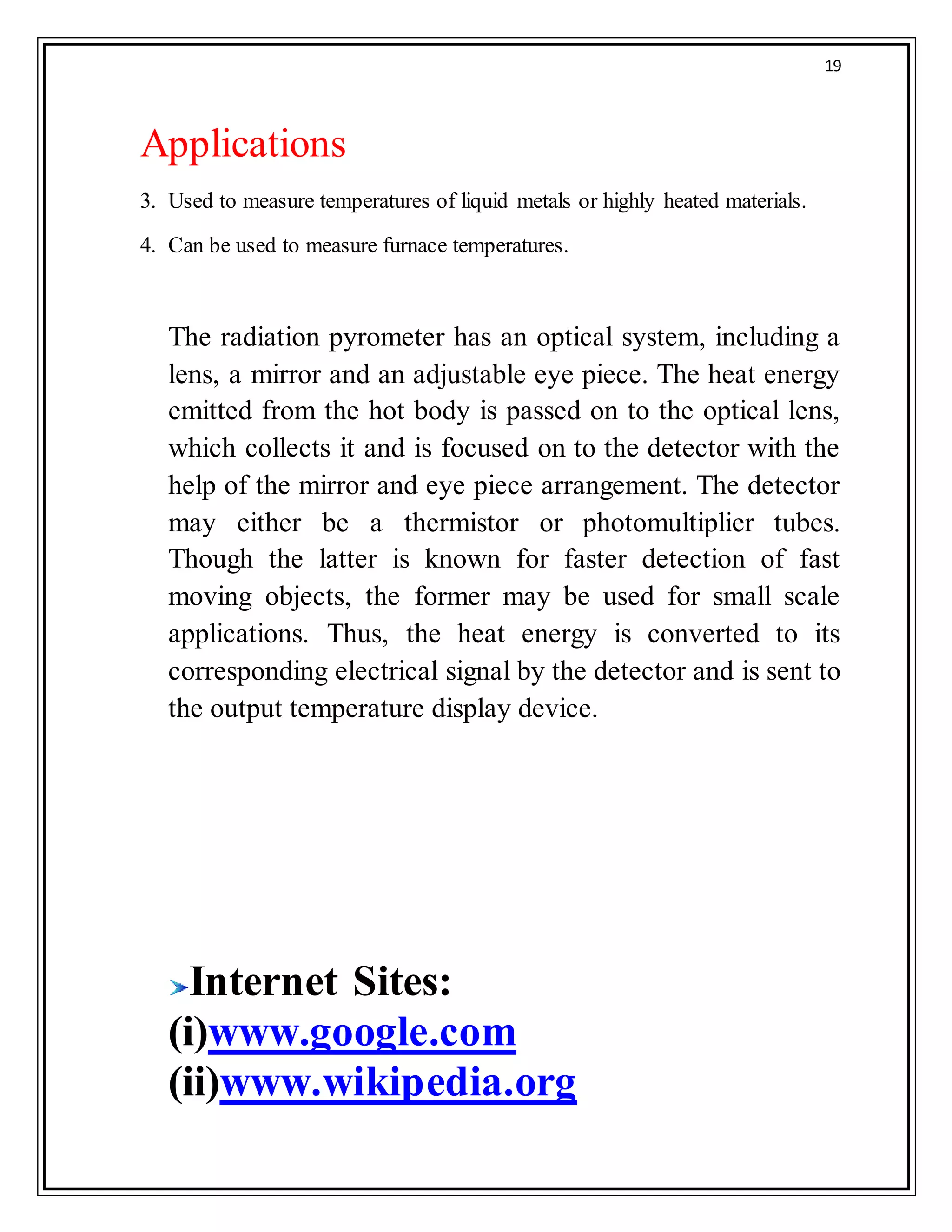Ambrish Rai submitted a seminar report on temperature measuring instruments to his guide Dr. Sushanta Tripathy. The 3-page report discussed various temperature scales including Fahrenheit, Celsius, and Kelvin. It also described common temperature measurement devices such as liquid-in-glass thermometers, bimetallic thermometers, resistance temperature detectors, and pyrometers. For each device, the report outlined the basic construction, principles of operation, advantages, and disadvantages.
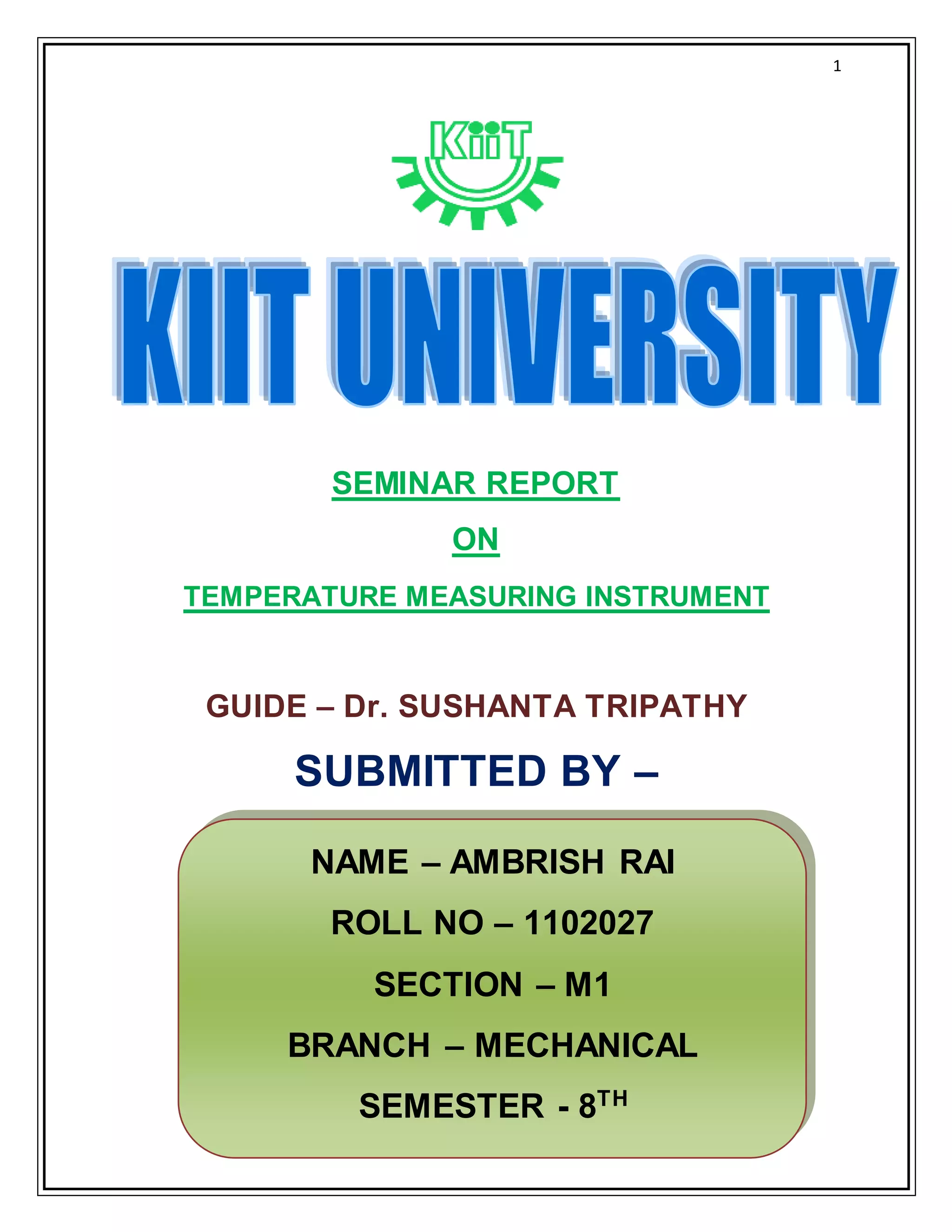
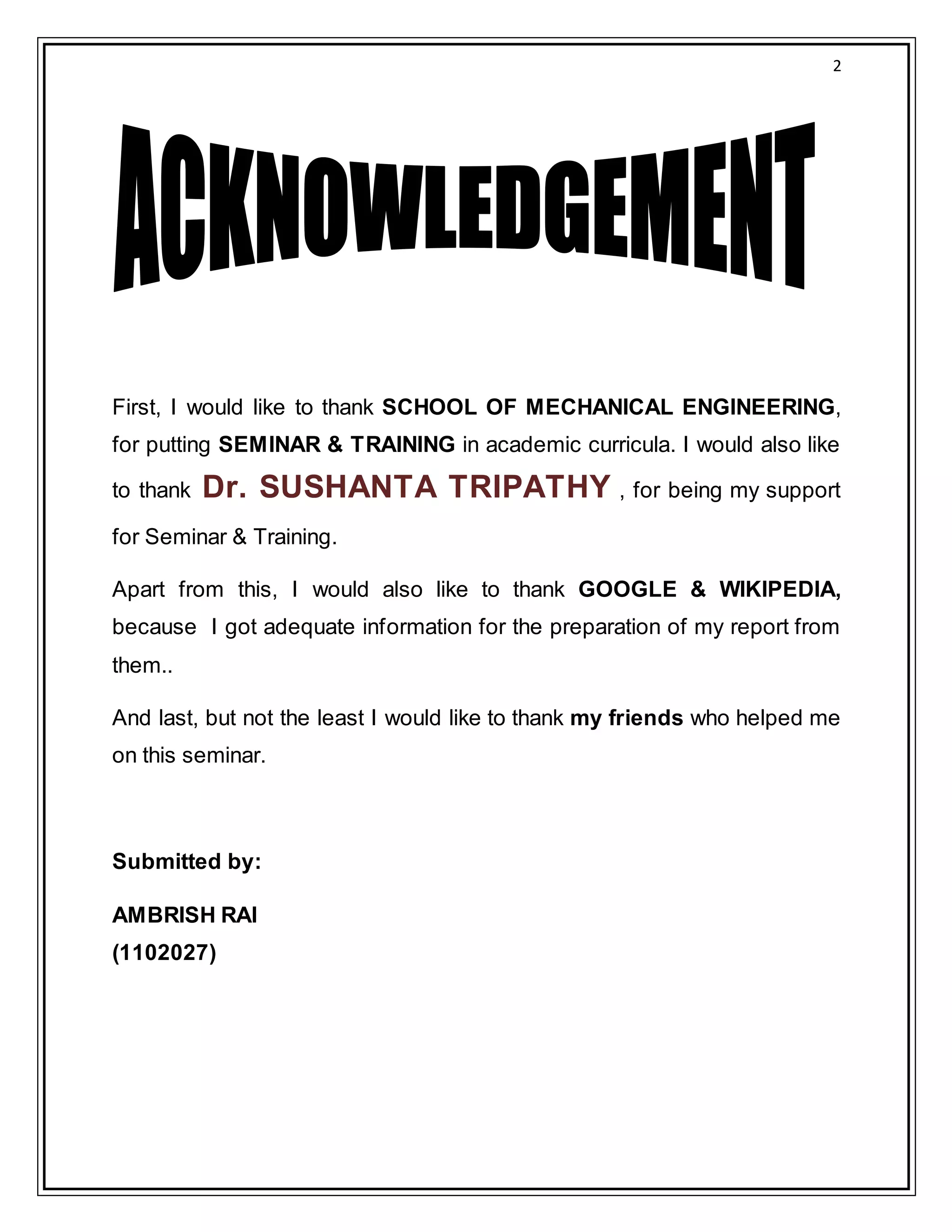
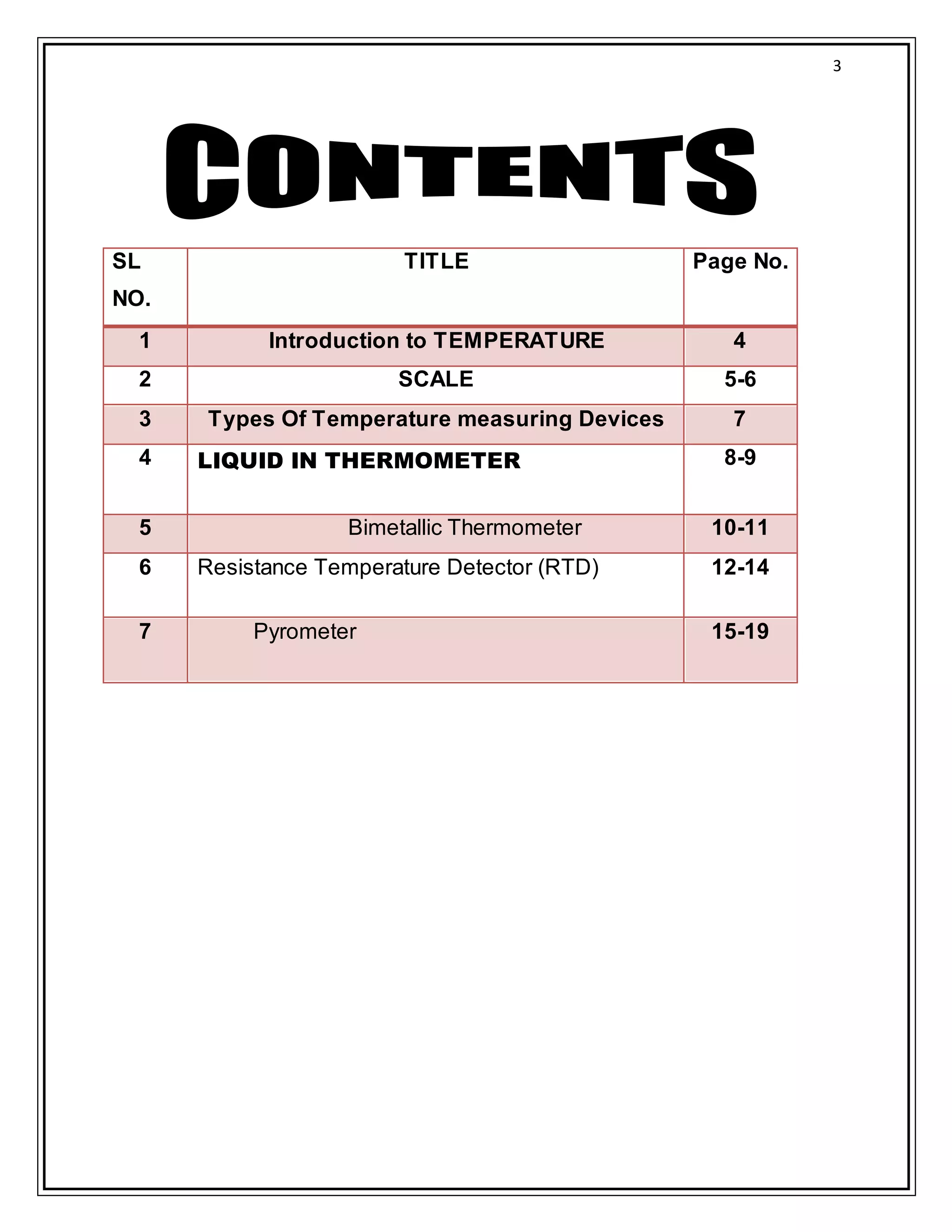
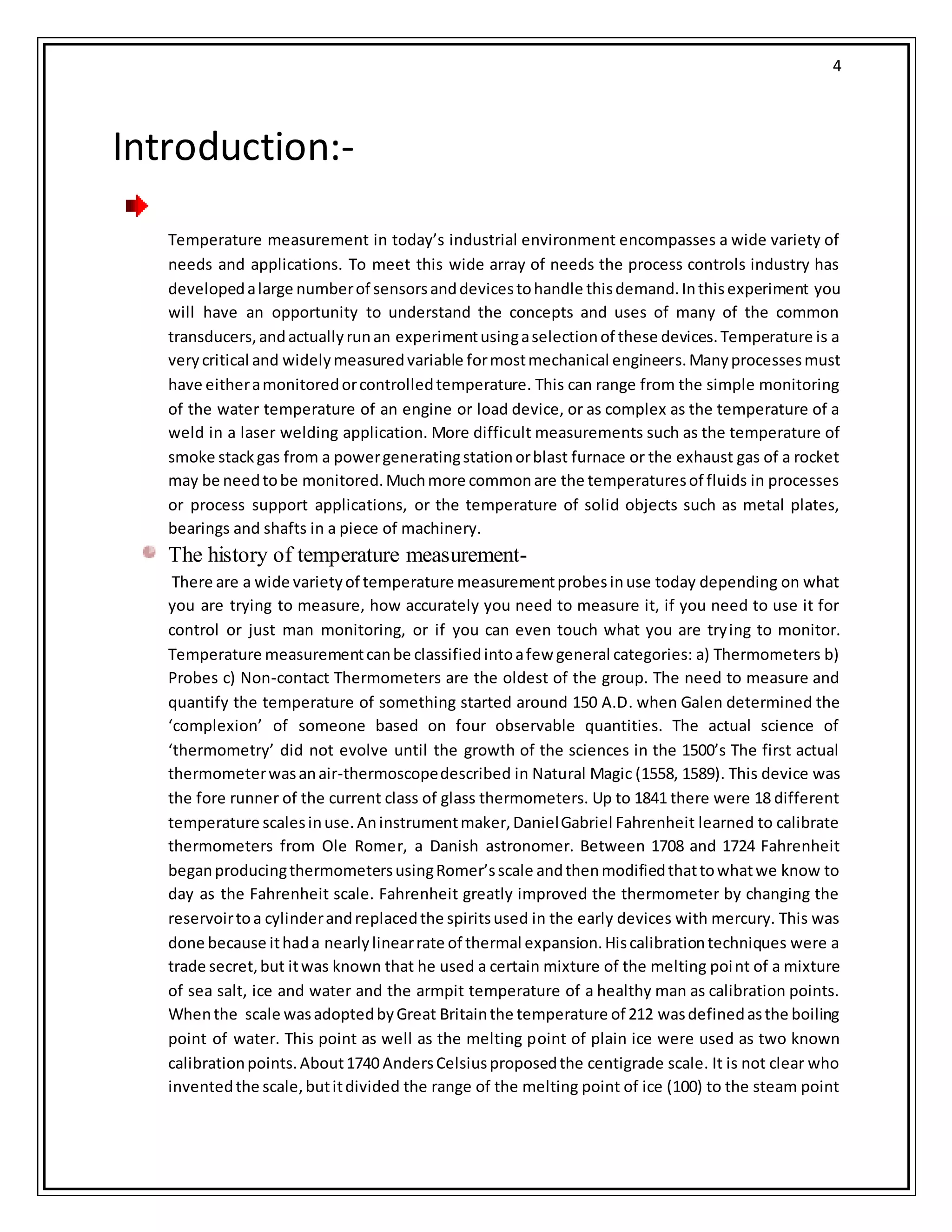
![5
of water(0) into100 parts, hence ‘centigrade’.Linnaeusinverted the scale so that 0 was the ice
point and 100 was the steam point. In 1948 the name of the centigrade scale was changed to
Celsius.Aboutthe time thatFahrenheitwasexperimentingwithhisliquid filled devices, Jaspeh
L. Gay-Lussac was working with gas filled tubes. He concluded that at a constant pressure, the
volume of the gas would expand at a particular rate for each degree of temperature rise, that
being1/267 perdegree.In1874 VictorRegnaultobtained betterexperimental results, showing
this number to be 1/273 and concluded that the pressure would approach zero at 1/273.15
degrees C. This lead to the definition of zero pressure at -273.15 degrees C, or what we now
know as the absolute scale.
Scale
Temperature is a measure of the thermal energy in the body.
Normally measured in degrees [°]using one of the following
scales.
1. Fahrenheit.[°F]
2. Celsius or centigrade. [°C]
3. Kelvin .[°K]](https://image.slidesharecdn.com/seminarreport-150410092207-conversion-gate01/75/Seminar-report-on-Temperature-Measuring-Devices-5-2048.jpg)

